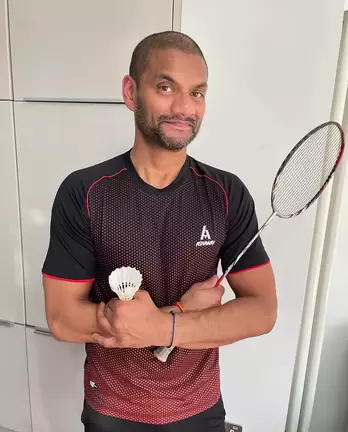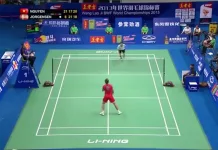
Or is it the science of badminton stringing?
It’s hard to pinpoint if it’s art or science. There’s so much technology wrapped up in a string and combined with the physics of string tension would lead me to think that it’s a science.
But then again, how many times have you had your racket restrung with the same string and same tension with the results being remarkably different?
So perhaps it is an art.
True Story about Badminton Stringing

A long time ago, in a badminton club far, far away… a player asked me if I could restring his racket. The conversation went something like this:
‘Is this worth restringing? It’s only an £80 racket?
‘If you play well with the racket then it’s always worth restringing. Wanna restring?
‘yes’
‘What string do you want?
‘Dunno
‘What tension?
‘Dunno
‘Do you want it to sound nice when you hit it?
‘Dunno
So…Let’s Start with Gauge.
The gauge relates to the thickness of the string and can range from 0.61mm (e.g. Yonex Aerosonic) to 0.70mm (e.g. Ashaway Rally21).
Thin gauge strings create a better feel of the shuttle whilst also having better repulsion properties; they are often regarded as power strings.
They also sound great when you hit the smash exactly on the sweet spot. Now, sounding great may be regarded as player vanity, but never doubt the confidence it creates – knowing you have timed that smash to perfection.
The downside is that the thinner gauge will lose its tension much quicker and if you’re a power player that mistimed smash will break a string (or two).
What about stringing tension?
Firstly, it should be noted that a lower tension creates a bigger sweet spot whilst a higher tension creates a smaller sweet spot. For this reason, lower tension is recommended for beginners and higher for more advanced players.
However, with lower tension, a lot of the touch and control are lost. Whereas at higher tension, the power is lost.
It’s useful to put numbers to all this.
Various badminton blogs will suggest 18-22 lbs (8-10 kg) for beginners 22-26 lbs (10-12 kg) for intermediates and 26+ lbs (over 12 kg) for advanced.
However, from experience, I don’t think this is entirely accurate or appropriate.
I wouldn’t recommend anything below 24 lbs (11 kg) regardless of the level of the player, anything above that would be the player’s choice.
With tension under 24 lbs, the stringbed isn’t stable; the strings are prone to movement. This results in the shuttle not doing what you want it to do. Causing masses of frustration mid-rally.
Not ideal.
At 25 lbs+ you get a delightful zip on the pace of the shuttle and a crisp sound on the strike.
Unless you are a genuine power smasher like Viktor Axelsen or Lee Chong Wei, the loss of power with high tension is minimal, but the improvement with touch play and control is massive.

And the sound?
You know when you have hit a good shot as it sounds great, and this adds to your in-game confidence.
And confidence makes you play better.
FACT.
What does this all mean?
Before getting your racket restrung ask yourself these questions:
Is the shuttle doing what I want?
Am I hitting the sweet spot consistently?
Am I getting the pace out of the shuttle when I hit it?
Does it sound good?
And use your answers to guide you through your string and tension choice.
What about me
I use Ashaway Rogue Duo, a hybrid string set that gives me power and control. I string my doubles racket at 28 lbs on the mains and 26 lbs on the crosses. My singles racket I string at 26 lbs (mains) and 24.5 lbs (crosses).
Get more badminton tips – subscribe to the Badminton Speak newsletter
- The Art of Stringing in Badminton - February 7, 2023



























